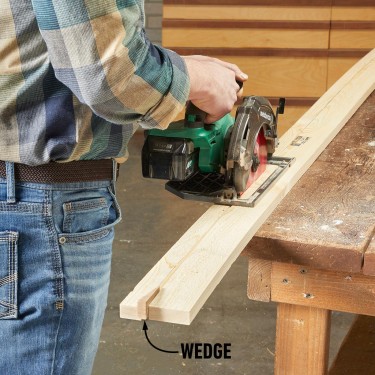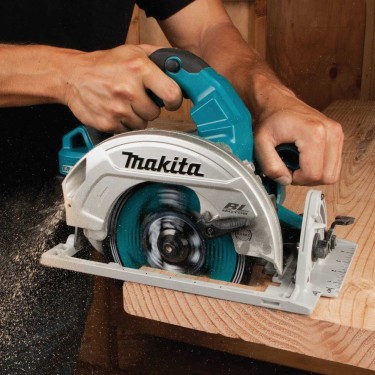Circular saw blades are durable, affordable and extremely effective for most workshop cuts.
Every editorial product is independently selected, though we may be compensated or receive an affiliate commission if you buy something through our links. Ratings and prices are accurate and items are in stock as of time of publication.
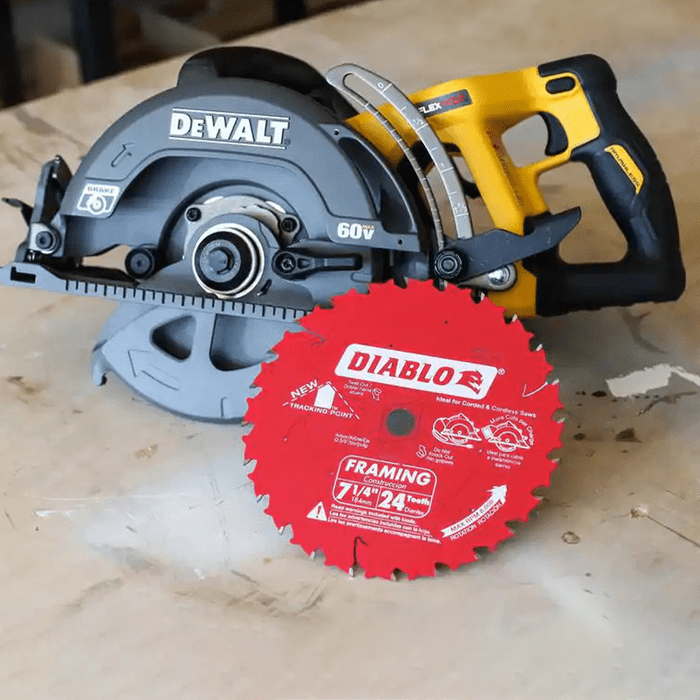
What To Know Before Buying Circular Saw Blades
When tackling serious DIY projects, you need to make quick and accurate cuts in a variety of materials. Most require a circular saw blade for quick, easy crosscuts (across the grain) and rip cuts (with the grain). Circular saw blades are essential in any DIYer’s toolkit.
Although they’re typically used in handheld circular saws, they work in miter and table saws as well. Circular saw blades can cut hard and soft wood, metal and masonry. If you’re planning on cutting 2x4s, ripping plywood sheets, chopping up thin rebar or trimming concrete paving stones, you’ll need a circular saw blade.
Circular saw blades can be tough to tell apart, so keep these considerations in mind:
- Blade type: Identified by material. Whether you’re cutting wood, metal or masonry, make sure you choose a blade made for that specific use. Never use a masonry blade to cut wood.
- Size: Choose one that’s compatible with your saw type. Most handheld saws use 7-1/4-in. blades. Anything larger than that, up to 12 inches, will typically be best for a miter or table saw.
- Teeth: The number of teeth indicates which type of cut it’s best for. Blades with fewer teeth (18 to 30) cut faster and cost less than higher-toothed options; they’re ideal for making rip cuts in wood. Blades with a higher tooth count (60 to 80) are better for crosscuts in wood because they produce a smoother edge. Combination blades, with about 40 teeth, are good for crosscuts and rip cuts. If you’re not sure what kind of wood you’re cutting, go with a combination blade. Blades for cutting metal have various tooth counts, so make sure you know exactly what you’re cutting before you purchase one. Masonry blades lack teeth; these typically use a diamond blade to carve through brick and stone.
- Tooth angle: The angle affects the way the blade cuts. Teeth that lean forward, AKA positive-angle teeth, cut more aggressively and are good for rough rip cuts. The less aggressive the angle, the better the blade for clean crosscuts.
- Kerf: This the width of the blade’s teeth; it indicates how much material will be removed with each cut. Thinner kerf blades naturally require less energy to use, making them preferred for cordless saws with limited battery run time.
- Coating: We recommend a blade with a non-stick or protective finish, if you can afford it. This coating helps reduce the buildup of pitch, a natural residue from wood, that can create unnecessary friction on your blade. This friction can make the blade overheat and break down quicker.
- Sharpening: The relatively low price of circular saw blades makes them less practical to sharpen. Sharpening can cost more than buying a new blade. Once blades become too dull to cut effectively, they can be recycled at any recycling center or scrap metal dealer.
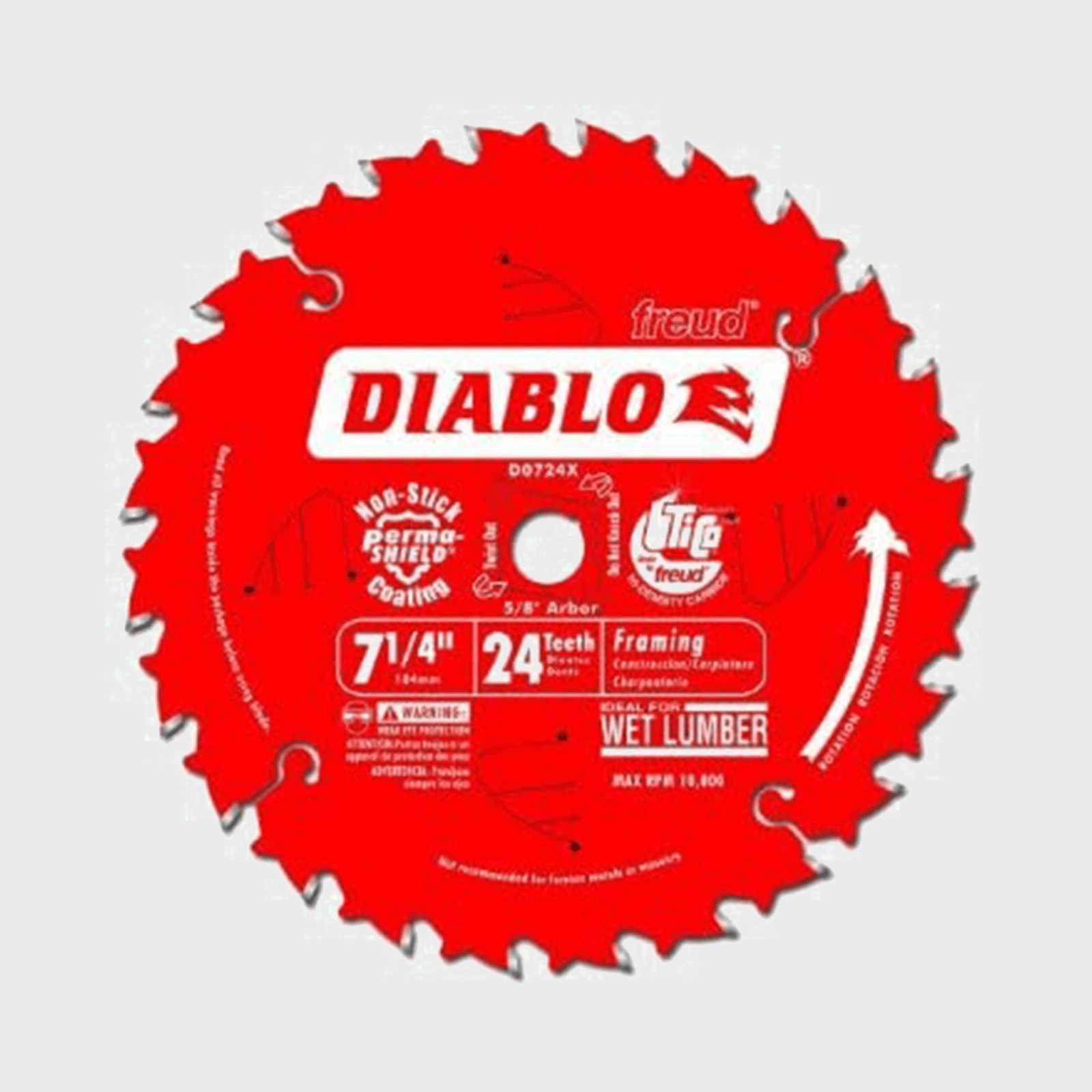
Best Circular Saw Blade: Framing Blade
The Diablo Framing Blade is a workhorse all-purpose blade. You’ll probably use it for 75 percent of the work you do.
It handles rough framing lumber, plywood and sheathing material with ease. The thin kerf cuts quickly and places less stress on the saw, extending the running time of battery-powered circular saws. A non-stick finish also reduces pitch buildup and corrosion, making this an especially durable option as well.
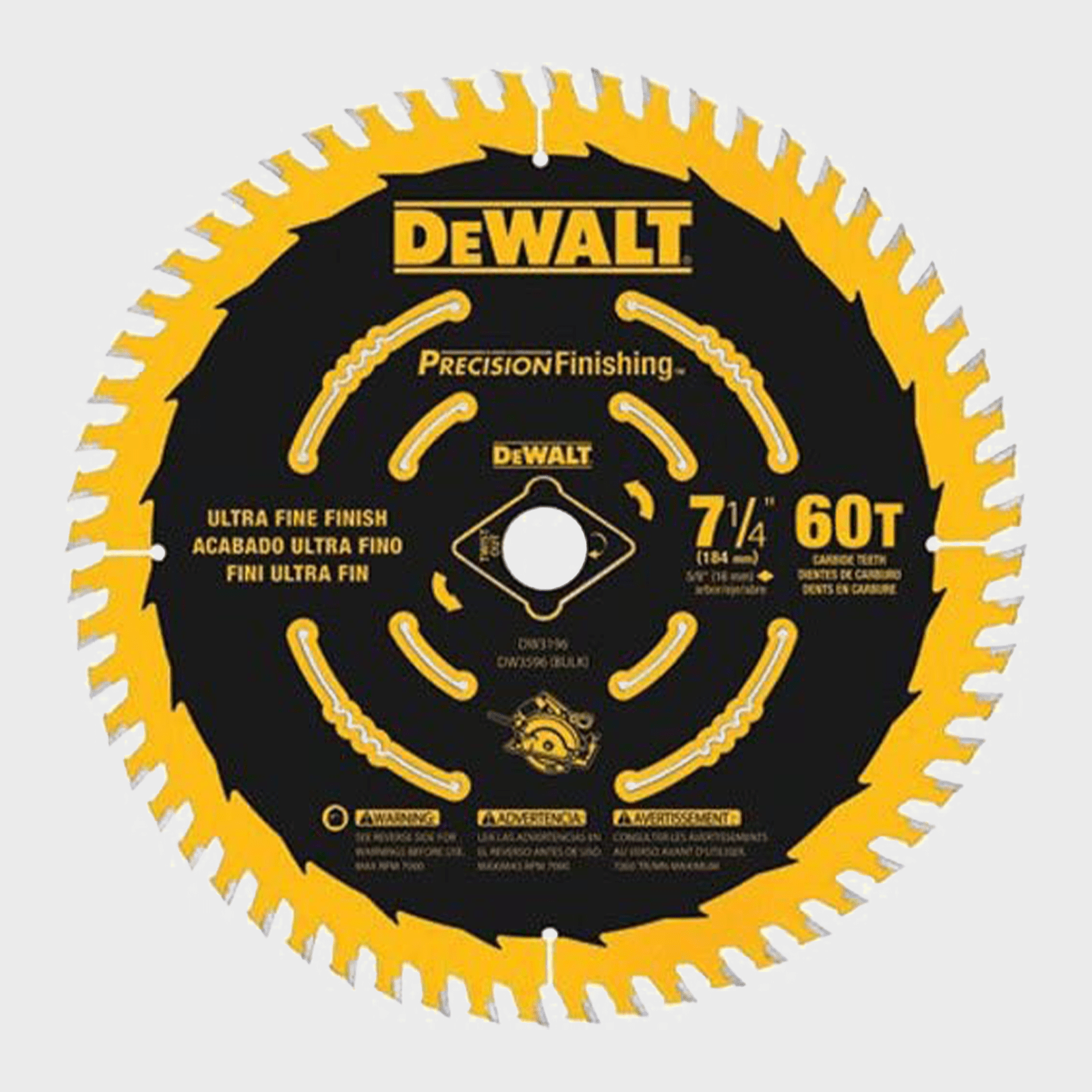
Best Circular Saw Blade: Finish
If you’re cutting hardwood veneer plywood or plastic laminate, consider the DeWalt Precision Finishing Saw Blade. Its high tooth count and less aggressive tooth angle leaves a cleaner cut. Ribbed heat vents cut into the blade keep it from heating up and increase its durability. Make sure you save this blade for the stuff that requires a clean cut.
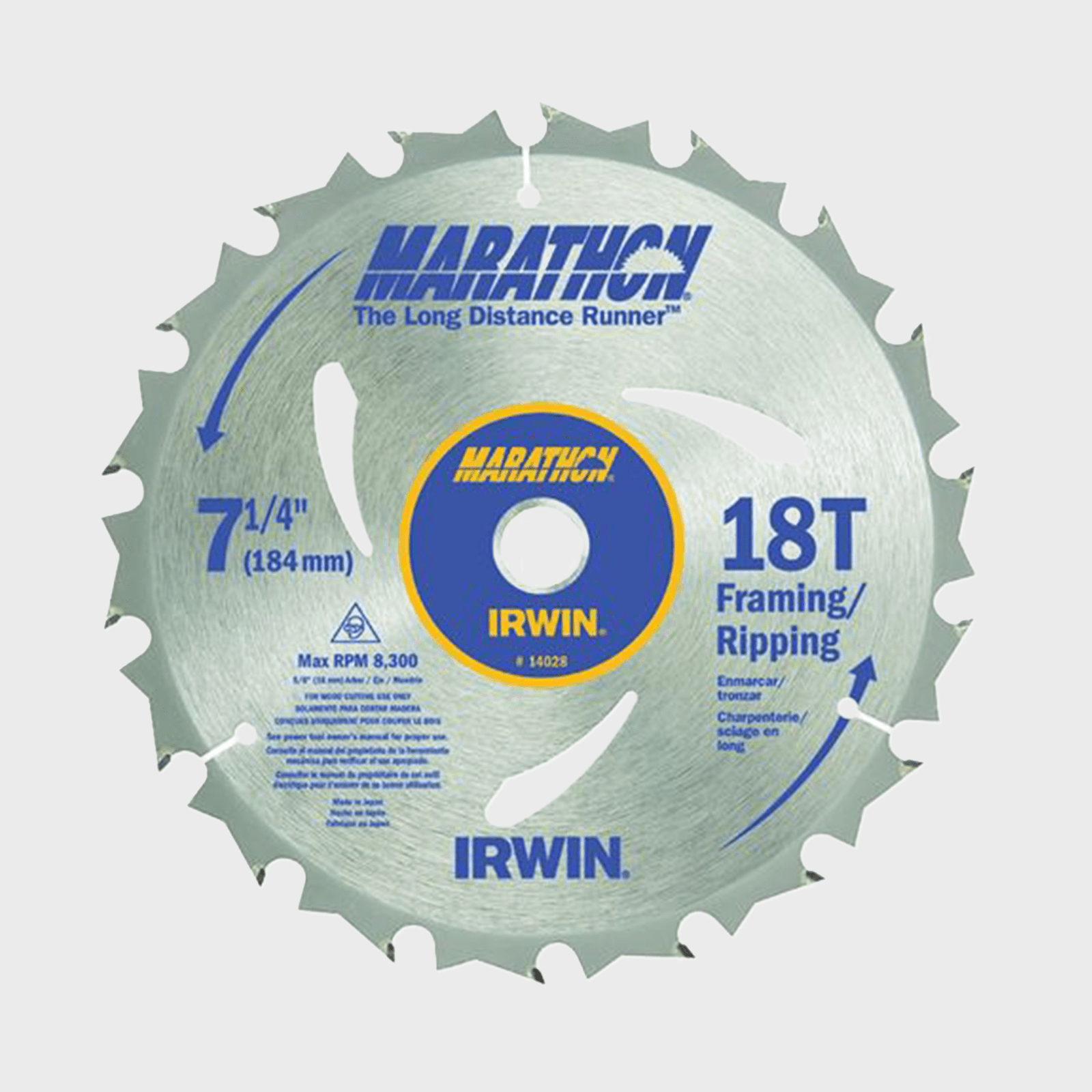
Best Circular Saw Blade: Rip Cuts
If you have a stack of boards or sheets to rip, the Irwin 18-Tooth Circular Saw Blade can do it quickly and easily. This blade has fewer teeth, angled to rip efficiently. The relatively low price, combined with the sturdy alloy steel construction, makes this blade a great value.
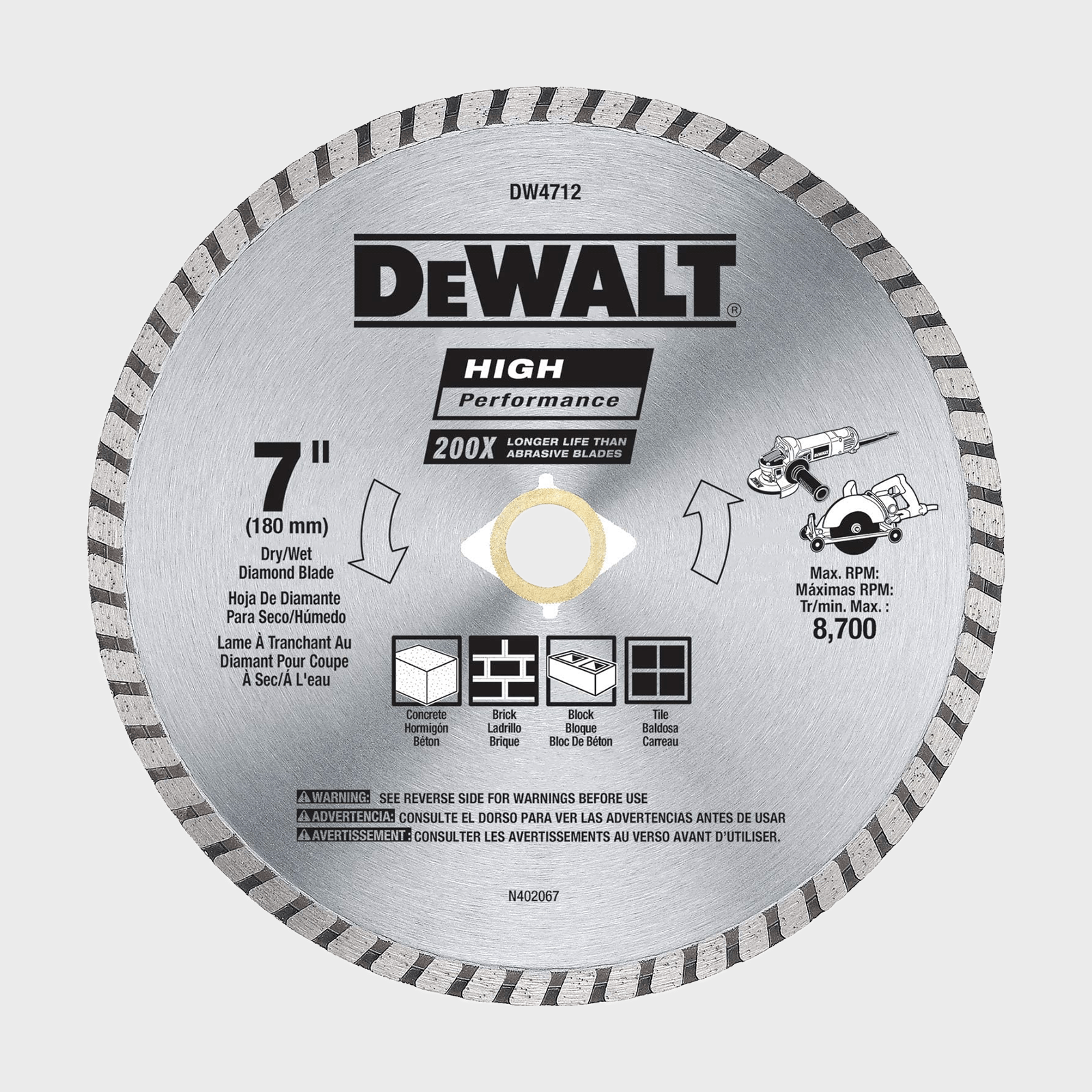
Best Circular Saw Blade: Masonry
The DeWalt Diamond Masonry Blade effortlessly cuts through concrete, brick, stone or tile. Our favorite feature is its thin kerf, which cuts down on the stone dust that’s harmful to breath and difficult to clean up. The kerf is also ideal for working with decorative tile or pavers, where preserving the maximum amount of material is paramount.
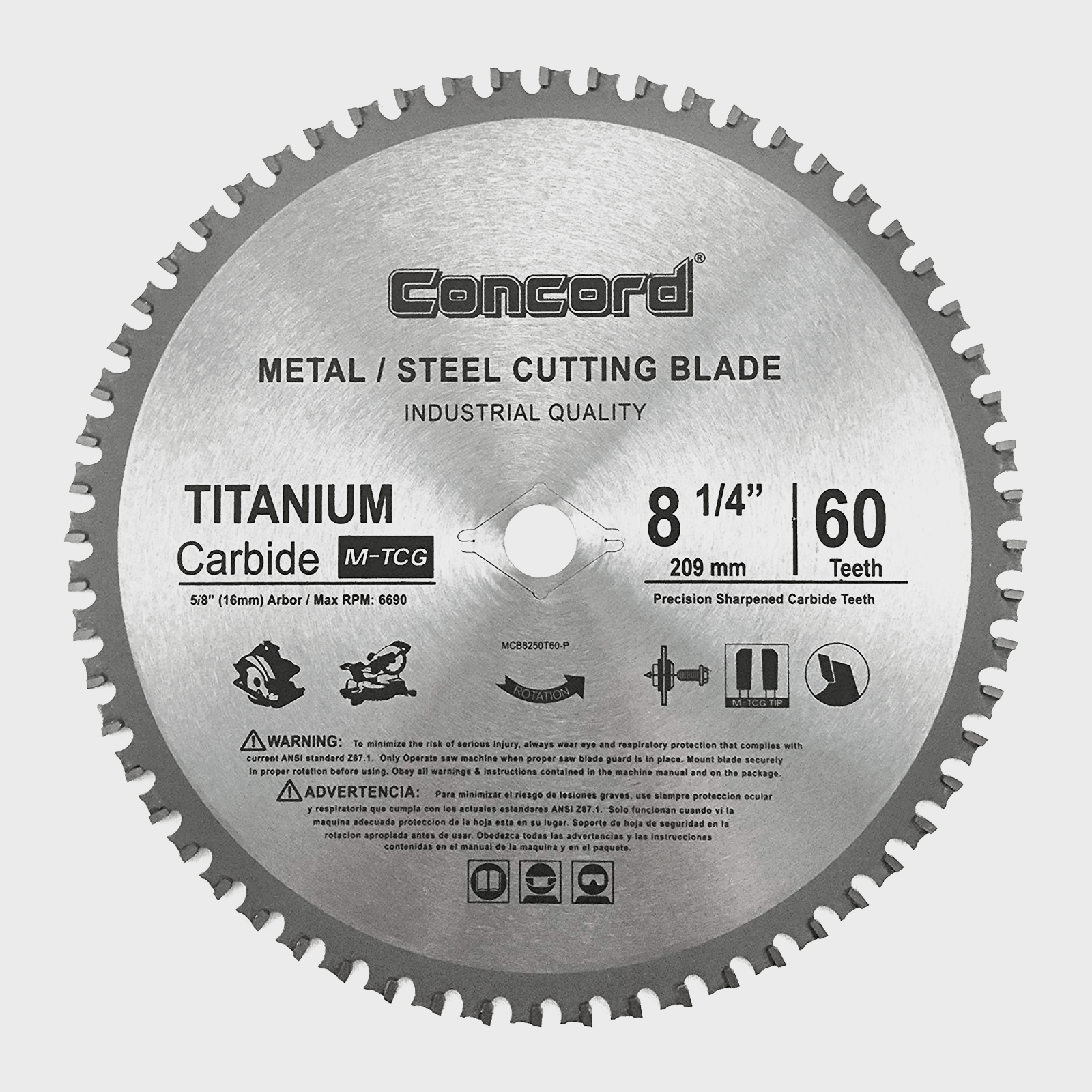
Best Circular Saw Blade: Metal
The 60 teeth of the Concord Ferrous Metal Cutting Blade feature two cutting surfaces, making them especially effective at cutting mild steel and cast iron. The 8-1/4-dia. makes it possible to tackle a wide range of jobs. This blade can be used in a standard circular or chop saw.
Note: Be sure to wear the proper eye protection. Metal chips and debris can cause serious damage.
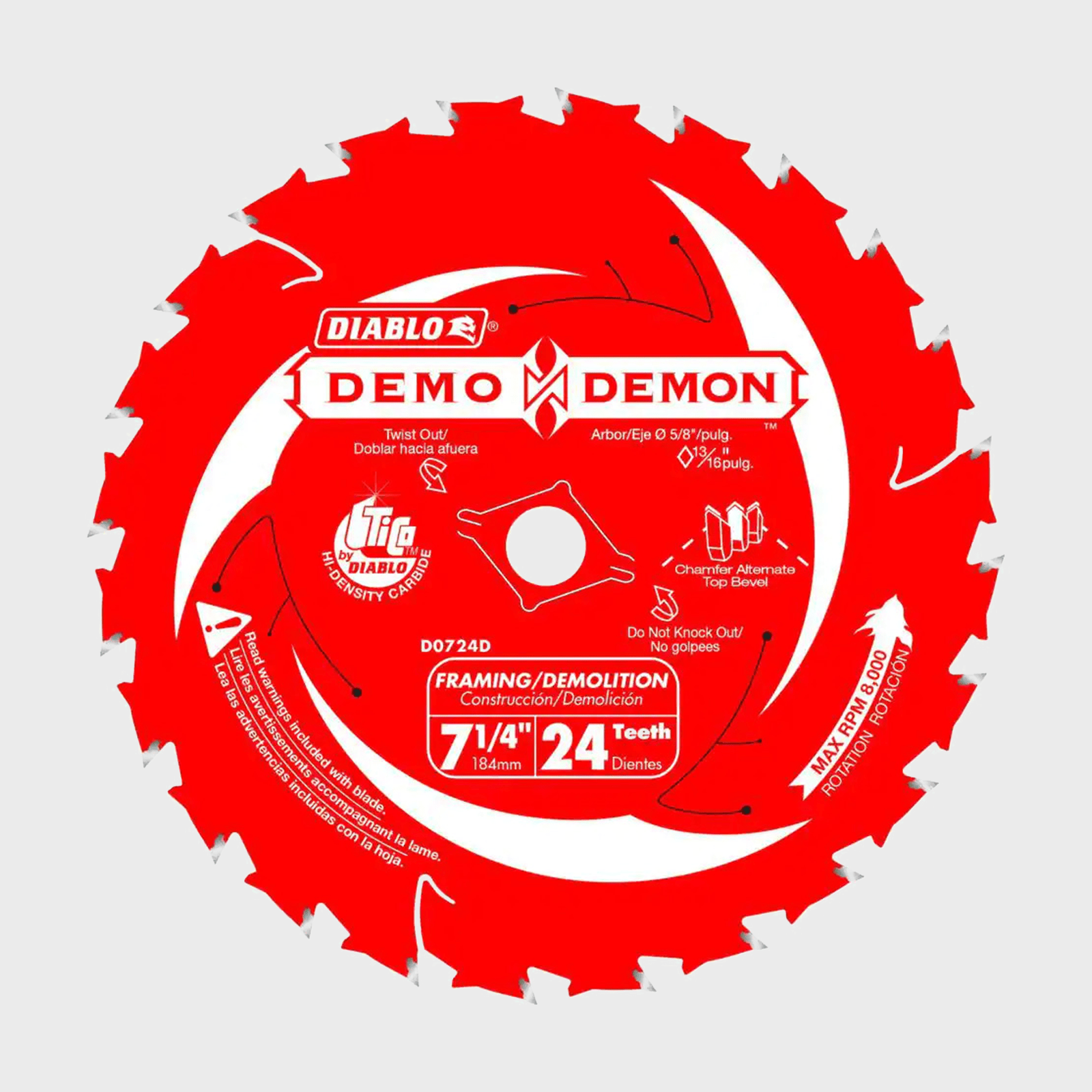
Best Circular Saw Blade: Demolition
If you plan on cutting through scrap or rough lumber with nails or fasteners inside, you’ll need the heavy-duty Diablo Demo Demon Circular Saw Blade. It’s not ideal for fine or finish cuts, but it can handle extremely tough material like nail-embedded wood, pressure-treated lumber and roof shingles and flashing.
A thin kerf also makes this a great choice for cordless circular saws. It extends the life of the battery and makes it easy to carry around at a large jobsite.
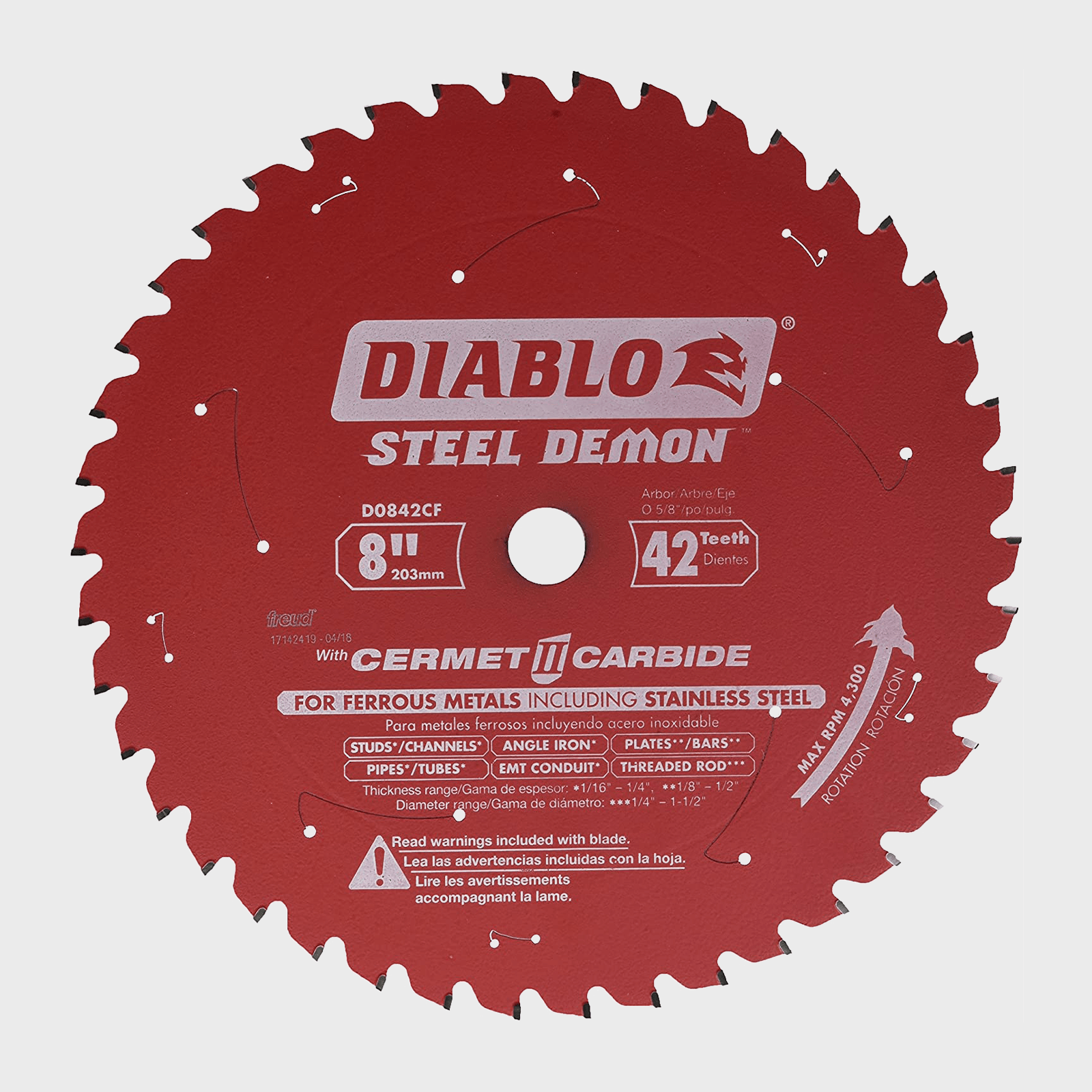
Best Circular Saw Blade: Heavy-Duty Metal
The Diablo Steel Demon Circular Saw Blade is rugged enough to handle serious metal cutting tasks, including cuts through angle iron or mild steel up to 1/8-in. thick.
The 42 teeth feature three cutting edges, increasing durability and reducing dangerous sparks. Ten stabilizer vents reduce vibration during use, keeping the blade cool and increasing accuracy.
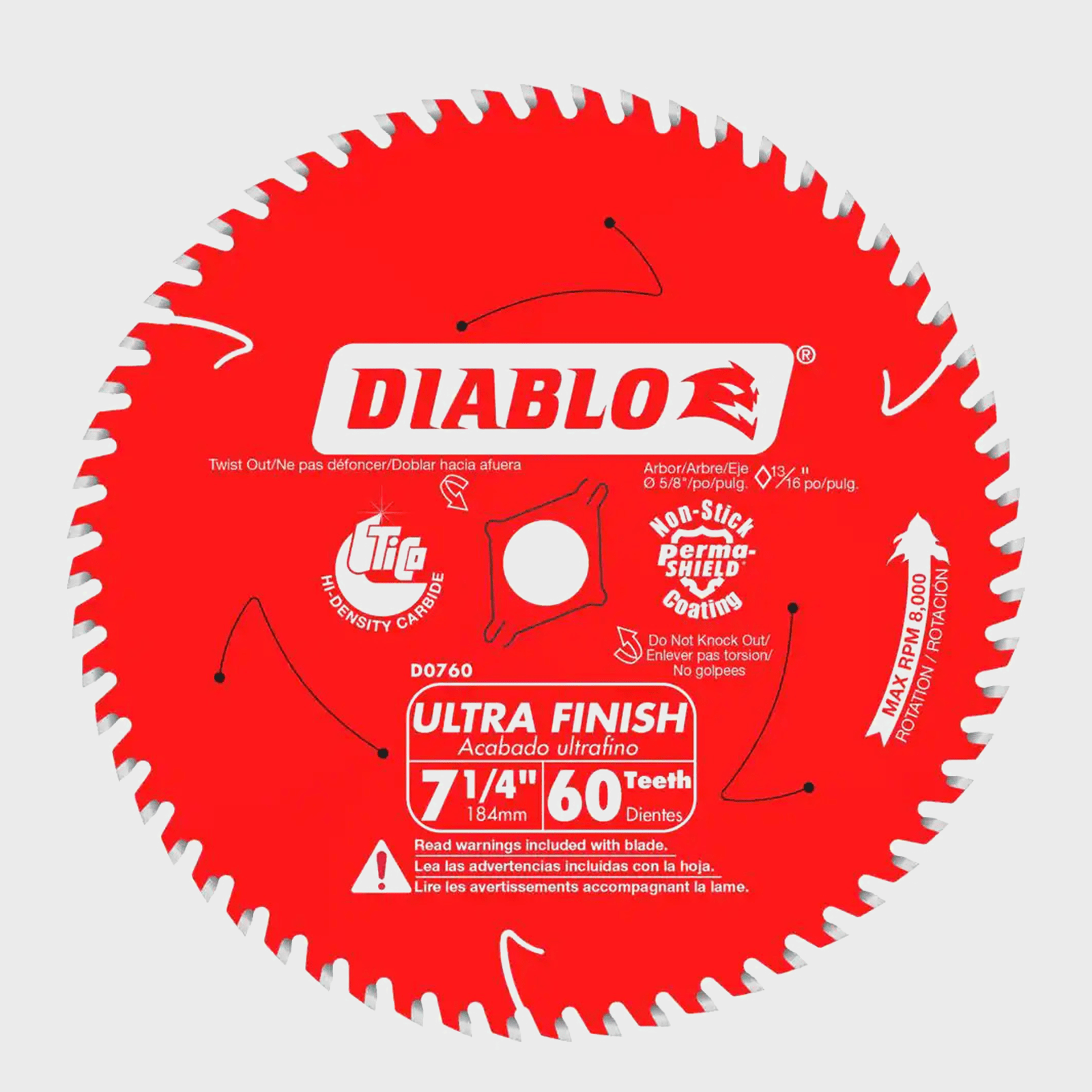
Best Circular Saw Blade: Ultra Fine Finish
With 60 teeth and a .059-inch kerf, the Freud D0760X Diablo Circular Saw Blade creates clean, smooth cuts on delicate material like veneer plywood and melamine. This thin kerf greatly reduces the chance of chipping and blowouts, and doesn’t waste any material. The non-stick coating reduces pitch buildup, making this a great choice for wet lumber.
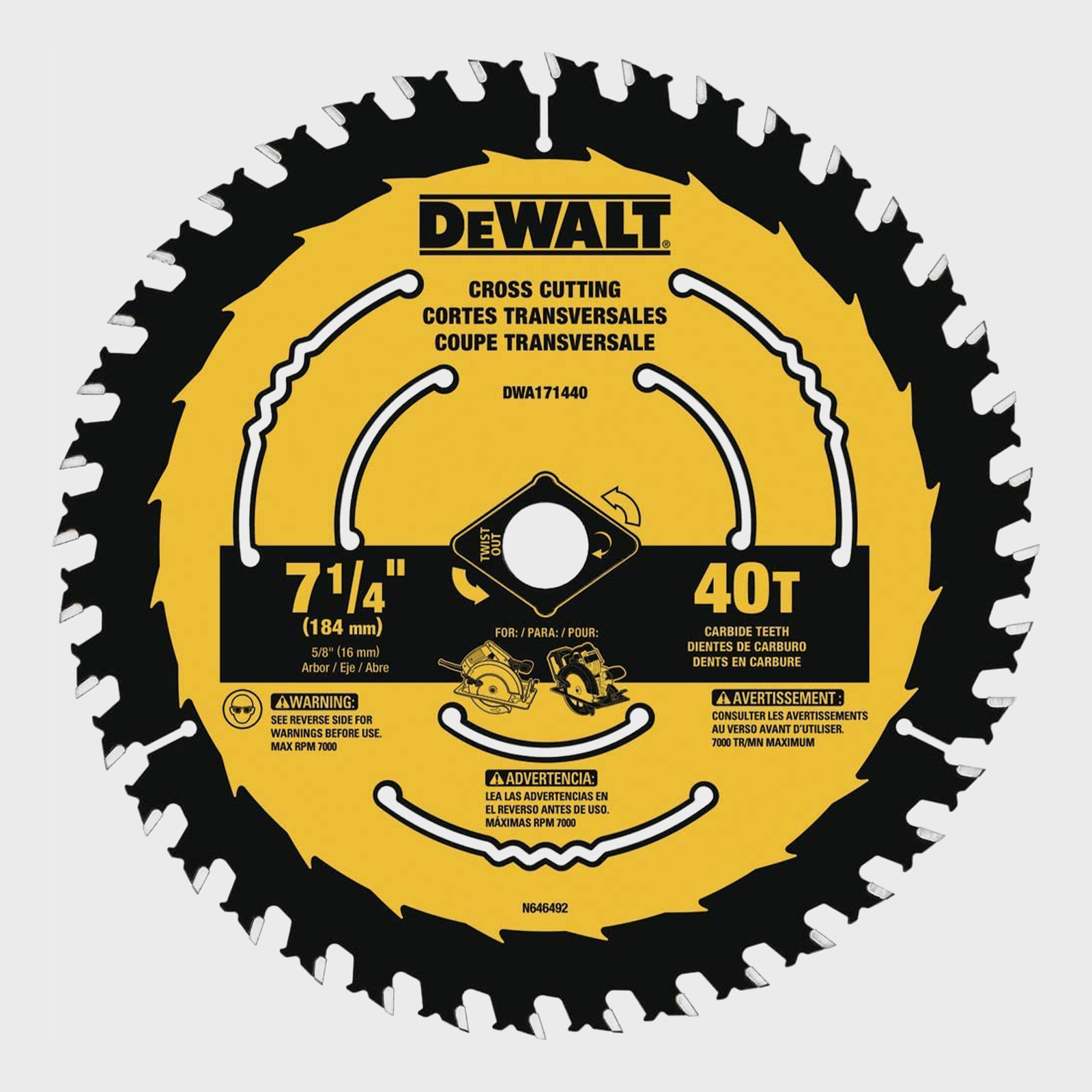
Best Circular Saw Blade: Combination
The DeWalt DWA171440 Circular Saw Blade performs basic crosscuts and rip cuts quickly and effectively. The low price, combined with the durable, long-lasting, tungsten-carbide teeth, make this blade a great value that’s built to last.
Six large anti-vibration slots reduce wobbling. That and the friction-reducing coating make it an efficient option, especially for extending the run time of battery-powered saws.
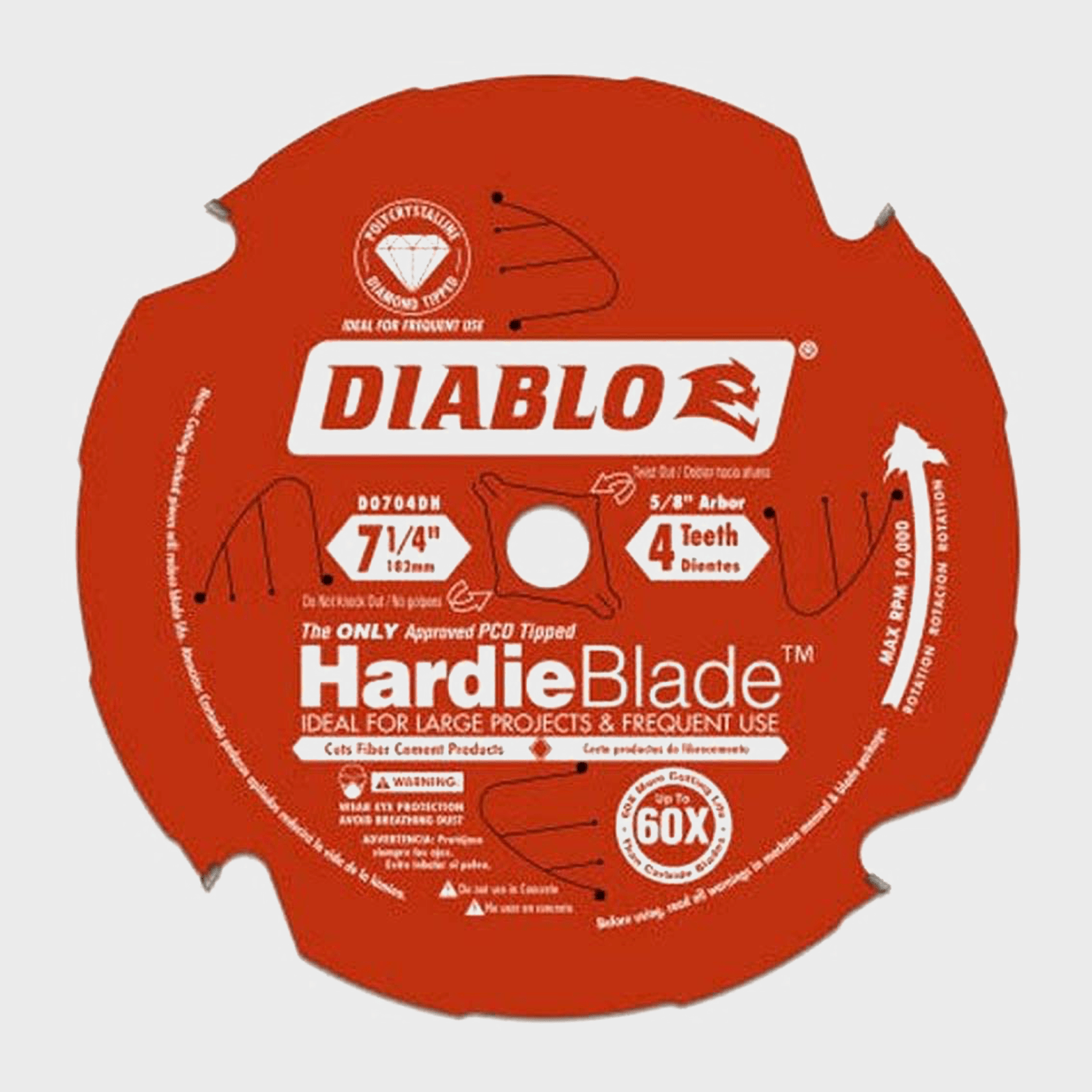
Best Circular Saw Blade: Fiber Cement Board
The Freud D0704DH Diablo Circular Saw Blade features four diamond-tipped teeth and a thin kerf. Combined with the laser-cut vents to reduce vibration and dust, it’s great for cutting fiber cement board (FCB) siding. It’s more expensive than many other blades, but the added precision and reduced waste make it a top choice for working with FCB.

